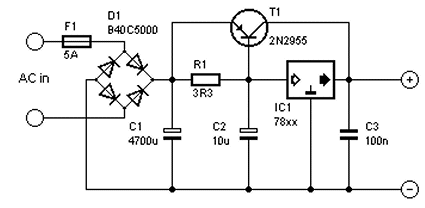Tubetec said:
Ive definately seen issues arise in pedal boards where multiple switchmode psu's cause a bad interaction in the signal path . In the context of USB , computer supplies are notoriously dirty and untrustworthy .
This has been discussed so many times I feed funny saying this but I'll do it anyway ...
1) Not all SMPS are good. SMPS noise is very dependent on layout and parts. But there are ones that are known to be good. In particular the MeanWell ones are popular. I once created a mic pre from an 48V SMPS for like $9 USD and it's noise floor completely flat and free of mains hum.
2) You must load an SMPS with at least 20% of the rated load or it will modulate the output at a low frequency. For smaller SMPS this frequently manifests itself as a whistle in the 1-3kHz range. For larger supplies, it can create massive noise at a wide range of frequencies. And note that at some point you can't just add a load resistor because it will need to be huge. So you need to pick an SMPS that supplies the right current to begin with. It should be selected for at 80% of load. SMPS work better when loaded. Even to 100%.
3) If you short an SMPS for even a few ms, the output protection mode (sometimes referred to "hiccup" mode in the datasheet) will kick resulting in only short bursts of output and generally not work at all. This is frequently caused by too much capacitance on the output such as when you connect the output directly to a board or multiple boards designed for a linear supply that have a lot of filter capacitors. The solution for this is to add a capacitance multiplier on the output of the SMPS. That will slowly turn on the pass transistor and let the filter caps charge up slowly and keep the SMPS output protection from kicking in. Note that for more than a few 100mA, a two transistor CM is required which incurs two diode drops in voltage but the larger SMPS frequently have a trim that can be adjusted upward to compensate (assuming you need the full voltage). You might need a largish capacitor directly on the output of the CM at the 0V reference where various grounds converge (sometimes referred to as the "star ground" but it's really more like the trunk of a tree).
4) You should filter the SMPS input too. The switching noise of an SMPS can easily go backward out the input and then pollute things connected to it. This is especially true of DCDC converters with similar frequencies where all of the inputs are connected together and cause low frequency "beating". If you look at datasheets, you can frequently find filters on inputs that are required to achieve a certain EMI rating. Althogh personally I have never experienced this kind of noise so this part is somewhat theoretical. I have used SMPS without input filters and never found them to pollute other devices. So it's not required. But line filters are pretty cheap so if you're designing something from scratch, you might as well.
5) At one point I was advocating CLC fitlers on outputs. But now I'm leaning toward just using capacitance multipliers which will filter out the high frequency switching noise and keep the output protection from kicking in as described above. You don't need a regulator since an SMPS is a regulator. Or, if you need to bring the voltage down a little, then use a regulator.
If one follows these rules, SMPS are superior to linear supplies in just about every category. The only potential issue would be that they can emit EMI that can be picked up by nearby devices like guitar pickups, high impedance / high gain devices or unshielded magnetics. But depending on the amount of current being switched, the device would have to be fairly close. For a typical SMPS of a few 100mA or so, it would have to be a few cm. Even for a 5A supply you would probably have to be standing right next to it. But again, not all SMPS are good. If it's just some crap wall wart from Ebay, you're on your own.
For a 5V 5A supply, an SMPS is definitely going to have superior noise performance to a linear supply. A linear supply is almost guaranteed to have mains hum. But again, there are rules for SMPS. If you're trying to mount it inside a tube amp, that would not be good.
